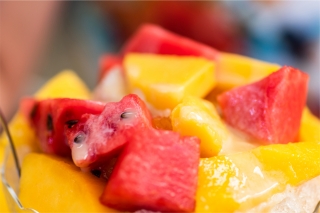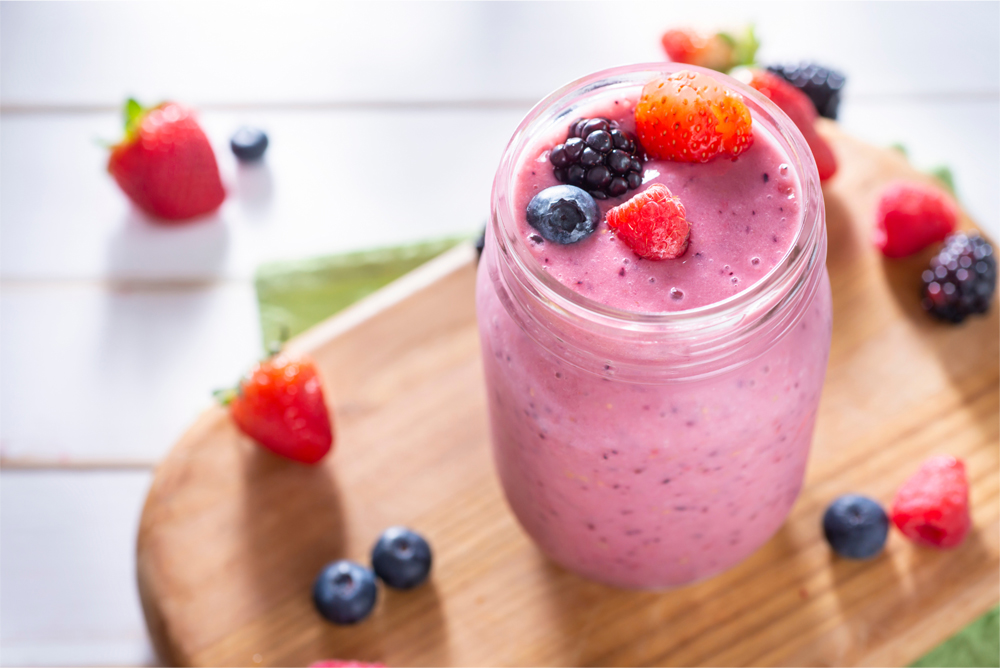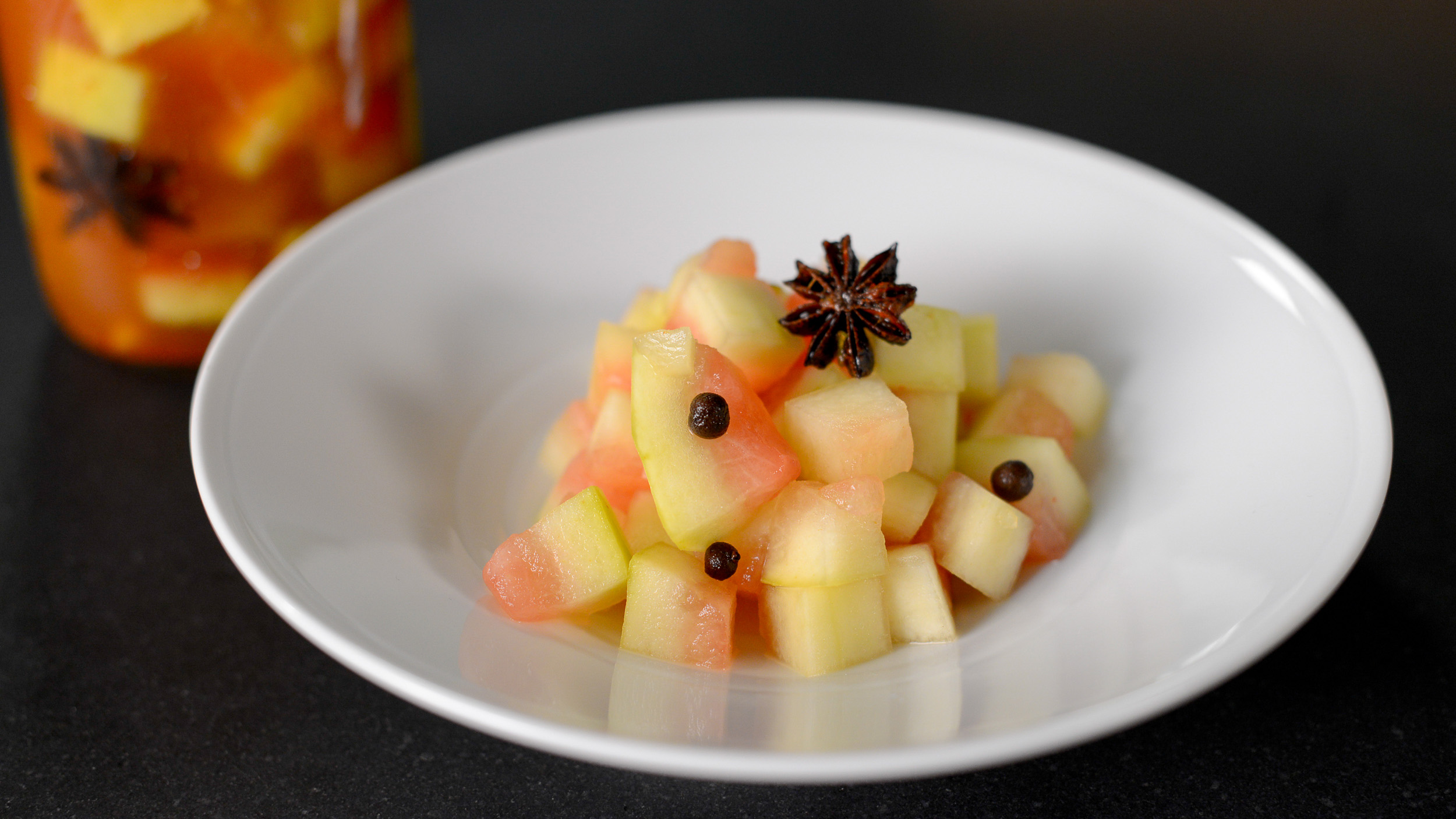
Fruit’s Beauty and Versatility Across Menus
05 June 2024Adding fruit to sweet and savory applications teaches students the benefits of fruit in all its formats.
By Lisa Parrish, GMC Editor
Feedback & comments: This email address is being protected from spambots. You need JavaScript enabled to view it.
Consumers perceive fruit as healthy and associate it with wellness. And most people find it craveable. Eighty-nine percent of consumers like or love fruit, according to a July 2022 Datassential Menu Trend. From a chef’s perspective, fruit is a flexible ingredient that can make a dish pop with color, balance an application’s flavor or add a familiar element to an otherwise unknown global offering.
So, how might a chef incorporate nutritious fruit across menu parts? The possibilities are almost as endless as the types of fruit and formats. How about grilling a canned pineapple for a smokey and caramelized flavor as an addition to salsas or fruit relishes? Perhaps a cook might sauté fresh unripe jackfruit with the sauce of pulled meat and watch how the fruit takes on the flavor of the pork or chicken. A baker may choose to use frozen raspberries in a lemon cake for acidity and sweetness.
Instructors can assist culinary students in their understanding of the many forms and tastes of fruit and how it can improve the quality, variety and appeal of a foodservice menu item.
Fruit’s Fluctuating Formats
Rarely can one ingredient be processed with various cooking and storing methods and retain its functional assets in an application. For example, consider strawberries and their uses across several different formats. Strawberries can be consumed fresh and are found across all menu dayparts in their unprocessed form. The berries can be frozen and used to create smoothies. The fruit can be canned preserving its flavor and nutrition allowing it to be utilized later in both savory and sweet sauces. A dried strawberry’s intensified flavor makes it a tasteful addition to salads, yogurts or trail mixes. Nutritious strawberry juice is the base for vibrant cocktails or dressings. Finally, strawberries can be pickled and included in a spicy curry or a tangy addition to grilled meats such as pork.
Click here for a lesson plan to help students understand how using certain fruits in varying formats can manage prep time, control food waste and add a fresh and vibrant flavor to applications.
Fruit in foodservice action
Nowhere is a nutritious, delicious and varied menu more important than in a healthcare setting. Chef Jeffery Quasha, senior director of culinary innovation for Morrison Health, appreciates fruit’s functionality and how it adds unexpected elements to menu items. When developing menus for Morrison Healthcare’s more than 1,000 hospitals and healthcare systems, Quasha follows his Rule of Five in striving to create restaurant-quality food in a healthcare setting.
 “Cross utilization of ingredients is important,” he says. When developing menus, he plans one ingredient that can be incorporated into five different applications across multiple dayparts. Fruits’ flexibility as an ingredient perfectly fits into this planning.
“Cross utilization of ingredients is important,” he says. When developing menus, he plans one ingredient that can be incorporated into five different applications across multiple dayparts. Fruits’ flexibility as an ingredient perfectly fits into this planning.
“For example, take a watermelon,” he explained. “First you can make a sparkling aqua dolce drink, then use the flesh for a firecracker watermelon salad with jalapenos. From there you could make chicken wings with a watermelon sauce and pickle the rinds as an upcycled ingredient in another application. Finally, you could create a watermelon salad.”
Limited time offerings (LTOs) added to menus also offer opportunities to create a variety of items and incorporate fruit based on its peak seasonality. “We would not feature tomatoes in December,” Quasha explained. However, they would create a Caprese salad variation with peaches, tomatoes, cheese and capers in the summer. “This is a comfort application with a seasonal fruit twist. It’s the right food, during the right month, telling the right story.”
A distinct aspect of in-season fruit is its natural sweetness in addition to healthy nutrients like fiber, antioxidants and vitamins. Quasha turns to sourcing local fruit when searching to add a sweet flavor to a dish and away from artificial sweeteners. “We are helping guests make better food choices by cross-utilizing ingredients with healing powers,” he explained. “It’s wellness that is not as ‘in your face.’” The chef gave an example of swapping traditional barbeque sauce for a blue and blackberry jam with a Cholula sauce, which combines the berries’ sweetness with the heat of the pepper sauce. “There are so many cool things you can do by staying away from artificial sweeteners.”
When you have beautiful and delicious ingredients, Quasha advises that chefs don’t have to take it to the extreme with menu ideation. “We have three chances a day to do something amazing for our guests. When a guest lifts a lid, their first impression is the most important. For example, you can offer a chia pudding with mango chutney. It is so visually appealing. Or, use the fresh mango and hit it with some tajin.”
Fruit lesson planning resources
Check out at these helpful guides for culinary instructors teaching the versatility, flavor balance and stunning appearance of applications made with fruit.
- Mango flavor pairing guide featuring spices, herbs, vegetables and proteins that pair well with mango.
- Mango flavor combinations and menu ideations for ripe, prepared/cooked and unripe (green) mangos.
- Watermelon flavor pairing guide highlighting herbs/spices, fruits, vegetables, dairy and protein.
- Creative savory fruit applications: the savory appeal of fruit.
- How to utilize frozen fruit in savory to sweet applications in all dayparts from breakfast to dessert.
Click here to listen to a CAFÉ Talks podcast featuring Chef Jeffery Quasha discussing the healing power of food.
Click here to read a Gold Medal Classroom Chef Profile piece featuring Morrison Healthcare’s Senior Director of Culinary Innovation Jeffery Quasha.
